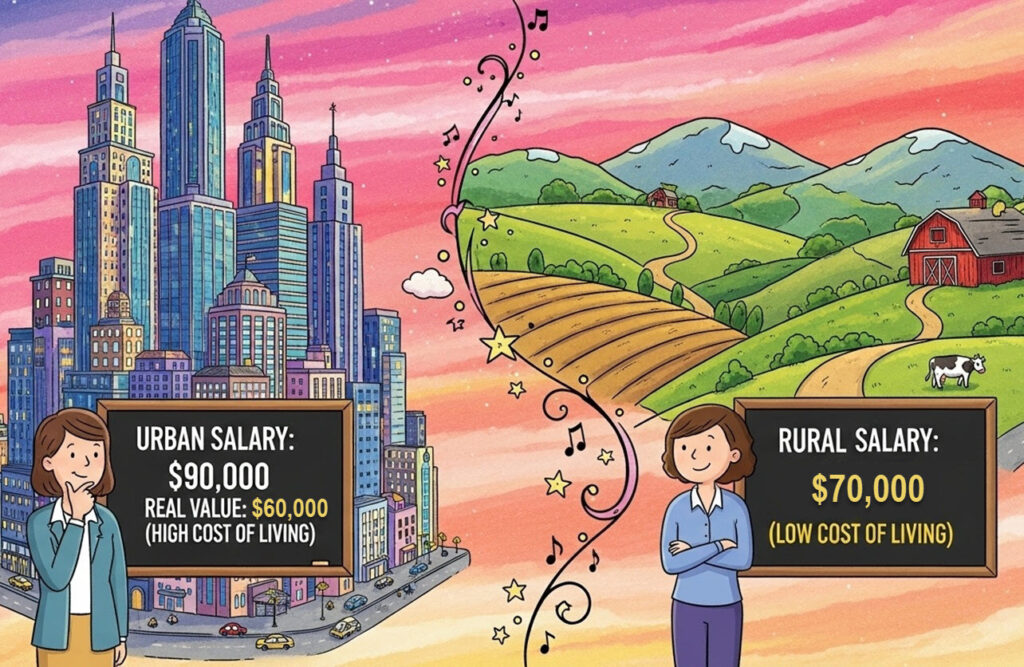When it comes to evaluating teacher compensation, numbers can be deceiving. A salary of $70,000 in one Virginia school division might seem generous—until you realize that in another locality, the same amount barely covers rent. That’s the difference between nominal and real salary, and it’s a distinction that matters deeply for educators, policymakers, and communities alike.
Nominal salary refers to the dollar amount a teacher earns, without adjusting for inflation or cost of living. It’s the figure most often cited in reports and budget discussions, and while it’s useful for tracking changes over time, it doesn’t tell the full story. Real salary, on the other hand, adjusts for local economic conditions—housing costs, transportation, healthcare, and other essentials—offering a more accurate picture of a teacher’s purchasing power and quality of life.
In Virginia, this difference is striking. A graph of average teacher salaries by school division in nominal terms might suggest that divisions in Northern Virginia are leading the pack (see interactive graph below), with the seven highest-paying school divisions all located in Northern Virginia. A teacher in Fairfax County, on average, earns over 90,000 dollars per year. It looks like these school divisions are in a ‘race to the top’, using their considerable wealth to outbid each other for top teaching talent.
But when adjusted for cost of living, the picture shifts drastically. In real terms, none of the teacher salaries in Northern Virginia fall in the Top 20 when salaries are adjusted for the high cost of living. In fact, Fairfax County falls in the ranking of teacher salaries from number 4 in nominal terms to 80th in real terms. Teachers in more affordable regions—in the Shenandoah Valley, as well as in parts of Southwest or Southside Virginia—actually enjoy far higher real incomes, despite earning less on paper. That’s because their dollars stretch further, allowing for better housing, lower expenses, and a more sustainable lifestyle.
This isn’t just a statistical nuance—it has real-world implications. When policymakers rely solely on nominal figures, they risk misallocating resources and misjudging equity. A division with high nominal salaries might still be struggling to retain teachers if the cost of living is prohibitively high. And we all know that access to a quality education is the main pathway to higher (nominal and real) income for Virginia families.
Conversely, a division with modest pay might be thriving, thanks to a lower economic burden on its educators. This confirms an earlier analysis of education results in Virginia, which seemed to suggest that the distribution of education resources in the commonwealth is biased against (high-cost) urban jurisdictions.
For teachers deciding where to work, real salary comparisons are essential. A new graduate weighing job offers from Fairfax County and Roanoke should consider not just the paycheck, but what that paycheck affords. Without this context, decisions may be based on misleading data, leading to dissatisfaction, turnover, and missed opportunities.
Moreover, understanding real salaries is crucial for addressing systemic inequities. If we want to ensure that all students—regardless of zip code—have access to qualified, motivated teachers, we must look beyond surface-level compensation. Real economic metrics help identify where support is truly needed, guiding smarter investments in housing assistance, transportation subsidies, and targeted salary adjustments.
In short, nominal salary tells us what teachers earn. Real salary tells us what they live on. As Virginia continues to grapple with teacher shortages, regional disparities, and budget constraints, it’s time to shift the conversation. Let’s stop asking how much teachers make—and start asking how far their pay goes.
Following this link to additional (static) graphs
Note: Feature image is AI generated and illustrative. The analysis is not.



